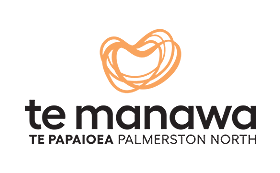The contents of a photo album held by Te Manawa show Mina to be a hands-on Director, engaged in all areas of the Manawatū Museum (now Te Manawa). Image courtesy of Te Manawa Museum
On the 10th of September, 1984, the doors of the Metropolitan Museum of Art in New York opened at dawn for a ceremony unlike any event the institution had ever held. It was the opening of Te Māori, an unprecedented exhibition that brought together Te Ao Māori and the museum world in four cities across the United States: New York, St Louis, Chicago, and San Francisco. Those who attended the New York opening recall that as the sound of karakia waned and the tapu lifted from the Sackler Gallery, they could feel history being made. On the fortieth anniversary of Te Māori opening, we can confidently say that is true – this date is a routinely recalled as a seminal moment in the development of bicultural museum practice. Often left out of contemporary retellings, however, is that this history-making exhibition involved a legendary Manawatū leader: Mina McKenzie.
Who was Mina McKenzie?
By her own accounts, Mina McKenzie was a bridge between cultural worlds. She facilitated the coming together of people who might not usually interact, encouraging them to listen openly and act respectfully. This was the mindset Mina brought to Te Māori, but her role as a bridge between cultures was one she had been training for since birth.
On February 2nd, 1930, Mina was born to Arnold and Nukuteaio ‘Nuku’ Selina Gillespie. Through her father, Mina traced her ancestry to the Seiferts – a family of German Lutherans responsible for establishing Aotearoa’s largest flax mill, Miranui, near Shannon. Although Pākeha, Arnold was proficient in Te Reo and deeply interested in Māori history. From her mother, Nuku, Mina inhereted genealogical ties to Ngāti Hauiti, Ngātu Raukawa, Te Ati Haunui-a- Pāpārangi and Rangitāne o Manawatū. Her maternal lineage also extended back to eastern Europe through her Jewish grandmother, Esther Caselburg. Mina’s place in the world was forged from a richly complex and multi-cultural whakapapa.
In her adult life, Mina cultivated interests that were as diverse as the cultures she embodied. Influenced by her father, she was well versed in Māori and Pakeha history. She surrounded herself with friends who shared her love of music and literature. Science took her interest too – though she never completed a degree, Mina studied zoology at Otago University. All of Mina’s passions served as impetus for action. In the 1950s, she was instrumental in setting up the Māori Women’s Welfare League. Twenty years later – and after sending all her children to Hebrew School – she helped establish the Union of Jewish Women.
In 1978, when she was appointed Director of the Manawatū Museum, Mina gained a new platform for making change. She pioneered a kaupapa that broke boundaries between disciplines and worldviews, building bridges in their place. From the very start of Mina’s tenure, Rangitāne and Raukawa were engaged as kaitiaki for the Manawatū Museum.
Contrary to prevailing museum practices, Mina upheld a philosophy of ‘keeping the taonga warm.’ In other words, objects in Manawatū Museum’s collection were often visited by members of the communities they originated from. For iwi, this meant precious taonga could be entrusted to the museum’s care with confidence that it would be seen, held, or worn again soon. Similarly, visitors were encouraged to take a hands-on approach wherever possible. Exhibitions were designed for immersive, experiential learning. Someone from any cultural or educational background could arrive at the museum and get a sense of what it was like to be a part of the cultures and histories on display. By the end of the decade, Mina had firmly established a reputation for being an ambitious advocate for a bicultural, multi-disciplinary museum practice that was meaningful to the community-at-large.

The contents of a photo album held by Te Manawa show Mina to be a hands-on Director, engaged in all areas of the Manawatū Museum (now Te Manawa). Image courtesy of Te Manawa Museum
What Was Te Māori?
The origins of Te Māori date back to 1972, several years before the start of Mina’s directorship and a time beyond the bounds of memory for many in the museum profession today. The Māori renaissance was in full-swing – decades of work had already been done to bring Te Reo, toi Māori, tikanga and Te Tiriti into mainstream public consciousness. Many Māori distrusted museums – seeing them as places where taonga was kept as a result of deception or theft. It was in this cultural climate that the American Federation of the Arts (AFA) decided that they wanted to host a touring exhibition of taonga Māori.
From the outset, Te Māori was not only about art or culture – it was a display of diplomacy. In a move that might seem strange to us today, the AFA approached Norman Kirk’s government to make their plan a reality. Sadly, Kirk’s death and a series of economic crises prevented the project from gaining ground in the 1970s. But the kaupapa of Te Māori was eventually picked up again in the 1980s and handed to the Ministry of Foreign Affairs to manage.
From there Te Māori developed quickly, its organisers moving with agility through the complicated context of its creation. Douglas Newton, then-curator of ‘primitive art’ for the Metropolitan Museum of Art had already started researching and selecting taonga. However, his approach caused consternation. Iwi had no choice in what went into the exhibition, only the right of refusal. Further, Newton’s way of ranking taonga to determine what was good, better, or best, did him no favours in securing support. When the Te Māori management committee was established in 1981, one of its first tasks was to persuade Māori communities, as well as museums, to back Newton’s ideas and send their taonga on a trip round the globe.
Out of these early negotiations between museums, Te Māori management, and iwi emerged new understandings of taonga and its place in the world. What Newton and his contemporaries viewed as a list of objects were to Māori living treasures, representations of ancestors who continued to have agency in the world. As such, they needed to be kept warm throughout their journey. Equally crucial was that museums had to come to terms with ideas around ownership. Even though taonga came from their collection stores, they belonged to the iwi that created them – the term ‘cultural ownership’ was adopted to describe this relationship between people and taonga. Once these concepts were understood, and the relevant stakeholders agreed to Newton’s selections, the path was laid for Te Māori to begin its journey to the United States.
Koha – Te Māori, a Cloak of Words. Produced by Ernie Leonard for TVNZ. Courtesy of Ngā Taonga Sound & Vision.
Can't wait to read Part Two?
Discover how Mina McKenzie helped shape this legendary exhibition in A Bridge Between Worlds Part Two.




